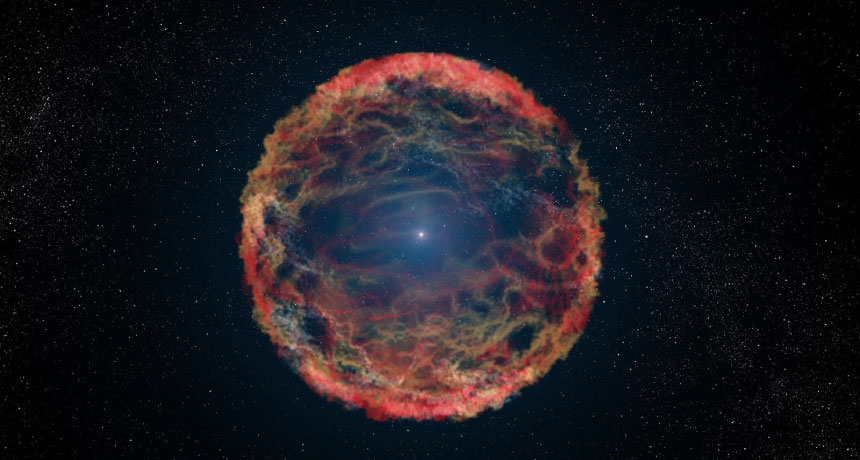
GHOST IN THE SHELL What looked like an ordinary supernova, shown in this artist’s illustration, might be the result of a single star exploding at least three times, blowing off expanding shells of gas each time.
NASA, ESA, G. Bacon/STSci

GHOST IN THE SHELL What looked like an ordinary supernova, shown in this artist’s illustration, might be the result of a single star exploding at least three times, blowing off expanding shells of gas each time.
NASA, ESA, G. Bacon/STSci